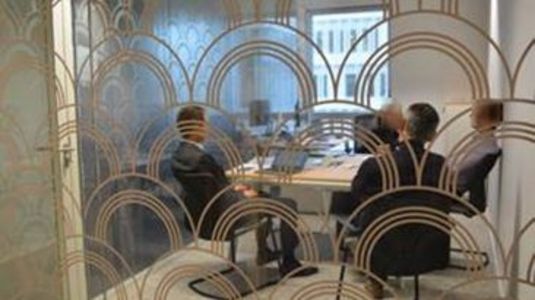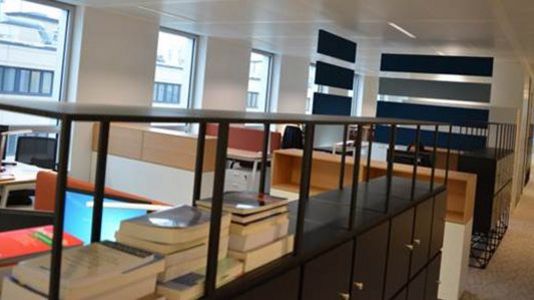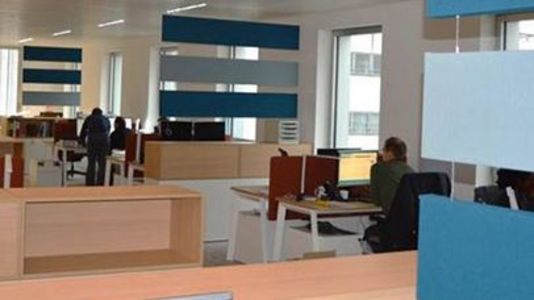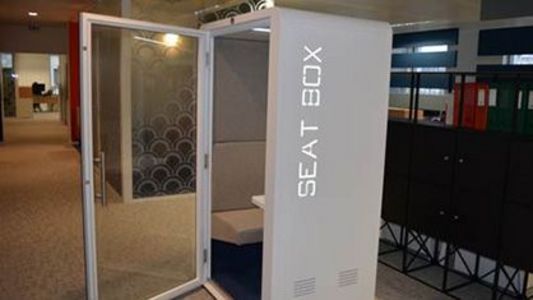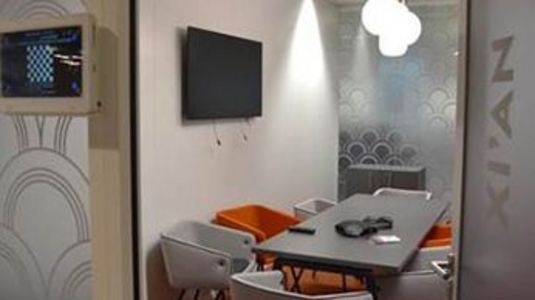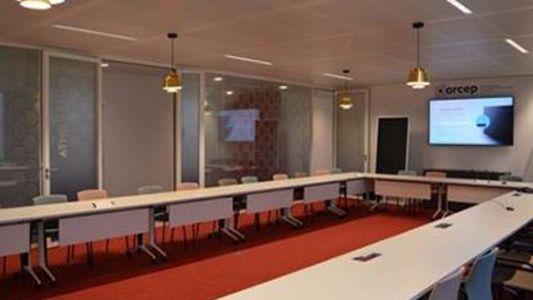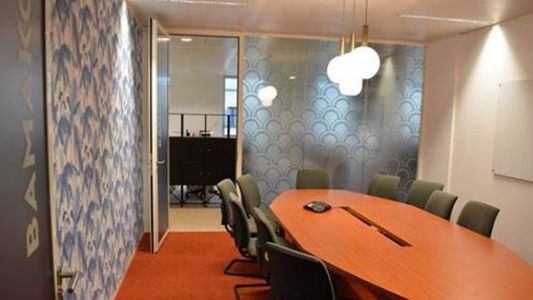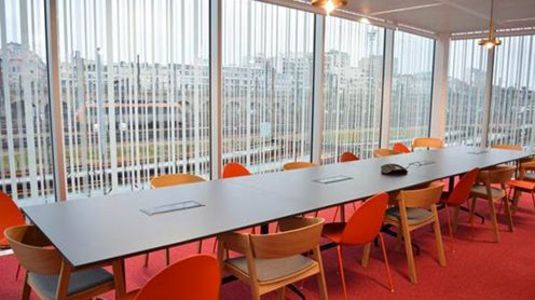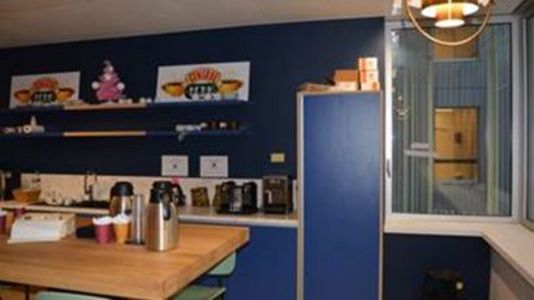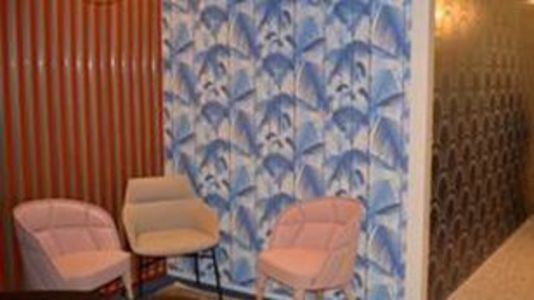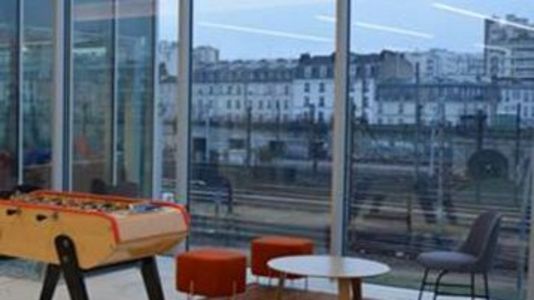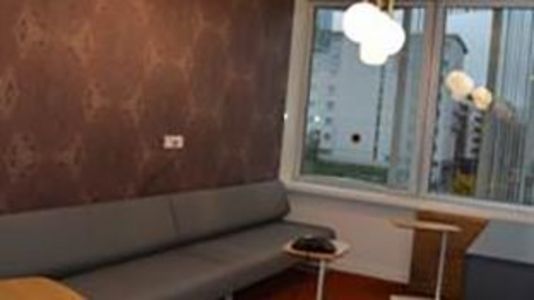Arcep opened its new offices on Tuesday, 11 December, with special guests Mme Agnès Pannier-Runacher, Secretary of State to the Minister for the Economy and Finance, and Mr Yvon Collin, Senator and President of the High Commission for Digital and Postal Affairs.
The President of the Senate Committee for Culture, Education and Communication, Ms Catherine Morin-Desailly, along with Deputies, Ms Christine Hennion, Mr Xavier Batut and Mr Eric Bothorel, also joined the tour of Arcep’s new premises, its open offices, the array of new spaces for holding meetings and informal gatherings, quiet rooms, phone booths, and relaxation and special events spaces. An opportunity for Arcep Chair, Sébastien Soriano, to explain how these new offices are an integral part of being a “liberated governmental organisation”, and mark a new stage in Arcep’s strategic shift.
Following the tour, Mr Yvon Collin welcomed this new approach, saying that Arcep has become a “leading engineer of social and national cohesion”.
After having delivered the reminder that “[Arcep] plays a very important role in reducing regional digital divides,” Ms Pannier-Runacher said she was “impressed by the energy with which Arcep carries out its duties, and how it is continually reinventing itself […], and I’m certain that these new offices will enable [Arcep] to continue to be a facilitator of dialogue and innovation, and to strive to fully achieve its mandate”.
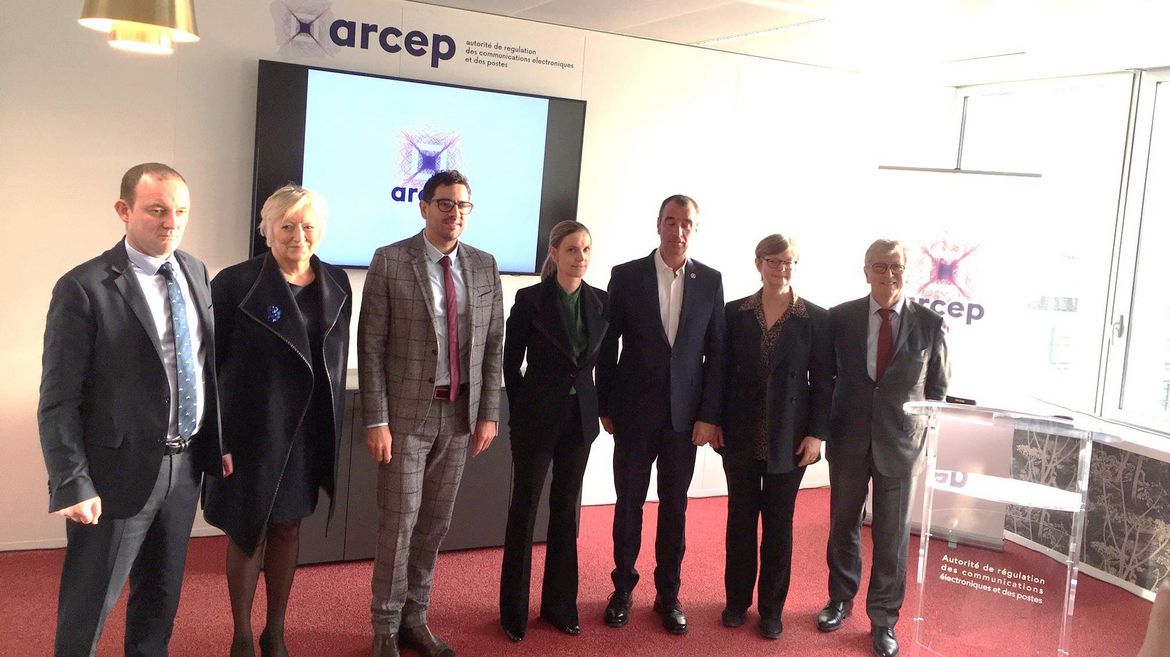
Dossier de presse | L’Arcep déménage et pivote en administration libérée !
The lease on Arcep’s old offices, in Paris’s 15th arrondissement, was set to expire in December 2018. So Arcep decided to turn it into an opportunity: to pursue the internal changes in direction it had begun, by creating more open and collaborative workspaces. This move, which resulted in a close to 20% reduction in floor space, will also mean a substantial decrease in rent (around 30% over the course of the lease).
A new address
Now housed in the Crystal building at 14 rue Gerty Archimède in the 12th arrondissement, Arcep has become a liberated governmental organisation, and a pioneer in the design of its workspaces.
Who is Gerty Archimède ?
Deputy, lawyer, and militant feminist, she became the first female Member of the Bar of Guadeloupe in 1939.
Why was the Crystal building chosen?
Arcep began looking for new premises, back in late 2017. Its specifications included: located in Paris, near a train station so that it would still be easy for regional representatives, with whom it works on regular basis, to get there. This imperative to be geographically accessible, the desire to continue to be more cost efficient and take a liberated approach to its operation, quickly made the Crystal building in the 12th arrondissement a natural choice amongst the roughly 10 other buildings on the shortlist. The building is close to the number 14 Metro line, and to the Gare de Lyon and Gare de Bercy train stations.
A new milestone in Arcep’s strategic shift
In early 2015, Arcep began a strategic review of its operations. Called “Arcep 360°”, the purpose of the exercise was to adapt regulation to the changing environment, identify the new challenges at hand and to rearrange its priorities, in keeping with the responsibilities it had been assigned by French and European lawmakers. The goal: to rise to the challenges of the digital revolution and take advantage of new technology to fully achieve its regulatory mandate, and even to change the methods it employs by taking a State-as-a-platform approach.
In January 2016, following an open, transparent and participatory process, Arcep presented its conclusions, and entered a new stage in its history. This has included the adoption of a mission statement, a brief text that describes Arcep’s fundamental raison d'être (“Networks as a common good”), along with a strategic roadmap that identifies the four pillars of its actions, three new regulatory methods and 12 priority areas of focus.
“I am asking you to be bold” – Emmanuel Macron, Minister for the Economy, Industry and Digital Affairs, January 2016
Emmanuel Macron, then Minister for the Economy, spoke at the presentation given on this “strategic shift,” during Arcep’s annual New Year’s greetings event, and called on the Authority to “be bold”:
“In this work you are doing to modernise […] your care must be punctuated by a dose of boldness. You need to maintain your ability to innovate, to think differently, to redesign your framework yourselves […] I am asking you to be bold, to be able to innovate, to question, to shake things up, to try, to experiment. And this is the very essence of the strategic review […] whose conclusions you have delivered to us today.”
Since then, Arcep has been publishing progress reports on a regular basis, providing an assessment on the advancements being made in achieving each of its priorities.
What does it mean to be an “liberated governmental organisation”?
“Liberated companies”: what does it mean?
Popularised by Tom Peters in the 1990s, then revived in France in the 2000s by Isaac Getz, and later Frédéric Laloux in “Reinventing organizations” the idea is based on a few core values: trust, relaxing strictures, “give control, create leaders”, transparency and freedom of thought. With a single goal: to create an environment that welcomes innovation.
Arcep undertook a major shift when putting its strategic review into action, drawing inspiration in particular from the philosophy of “liberated organisations”. By redeploying its strengths into new regulatory mandates, with the same number of staff, and by “reinventing” itself, Arcep changed both its work culture and its organisation. Its teams then began a collaborative internal process of investigation, baptised “OLAF” (for “Organisation libérée pour l’Arcep du futur”: A liberated organisation for the Arcep of tomorrow).
The core principle: to question how Arcep operates, how it works, and its ability to adapt to the challenges of our times, to reinvent itself and become a liberated governmental organisation. Following a series of proposals from the teams, the first concrete actions were taken in the areas of telecommuting, skills and knowledge management and strengthening the culture of trust: incorporating open management in managerial structures, open organisation in the meetings with outside experts during “Pimp my IAA” (Independent Administrative Authority) workshops
Arcep’s move and adoption of new workspaces marks a new milestone in the process.
Why make Arcep shift?
In late 2017, in an interview with Acteurs Publics, Arcep Chair Sébastien Soriano, said: “In every administration there are agents whom I call “public barbarians,” to echo the expression coined by Nicolas Colin to describe tech entrepreneurs, who are the reformers we need […]. I believe we need to rekindle a certain radicalism in the public service, in other words, to go back to our roots, to the cause that all of its agents serve. I believe in the “barbarisation” of the State more than in its modernisation. Because we will never change the State incrementally. On the contrary, we need to be very radical, given the huge crisis today that separates citizens from their government.”
Reinvented workspaces to be a better regulator
The new way that Arcep’s workspaces are organised is fully in tune with this “barbarisation” of public action, and the desire to pave the way for serendipity and inventiveness amongst the teams, by creating an environment that welcomes personal initiative.
Rethinking the workspace to stimulate inventiveness and creativity, to underpin new forms of regulation
The open plan offices make it easier for teams to work together. The many informal meeting spaces, lounges, quiet rooms, phone booths and relaxation spaces encourage mobility, inter-departmental dialogue and the end of “island mentalities”. Some forty such spaces spread out over two floors are available to the 170 members of the Arcep staff.
“To explain the difference between regulatory measures and mechanisms, I often give the example of the difference between a playlist and a DJ: the latter adapts to their environment. To perform their regulatory duties, Arcep’s teams need to be adaptable and creative. They cannot always count on existing models or known situations. A good example are the upcoming 5G frequency allocations. Allocation methods, the obligations imposed on future licence-holders, frequency sharing models and models for cooperating with vertical industry players… all of them need to be designed from scratch!” explains Sébastien Soriano.
The single and double, walled offices of the past have been replaced by purpose-built workspaces: quiet spaces for writing, brainstorming, holding formal meetings with outside guests, team meetings, teleconferences. While also being very mindful of aesthetics: drawing on residential interior design codes when outfitting the workspaces, like so many rooms in a home.
These new offices also allow Arcep to increase its ability to host events, and so to expand its policy of becoming increasingly open to outside input, and to co-constructing regulation with telecoms, tech and postal sector stakeholders.
The newly designed premises are also a major asset when it comes to Arcep’s attractiveness as a place to work: ensuring wellbeing in the workplace and a professional environment is vital when hiring, and keeping the finest people, from both the public and private sectors, some of whom possess rare and much sought-after skills, in a highly competitive marketplace. The way that Arcep’s activities are evolving has also created the need to turn to groups of, up until recently unfamiliar, professionals: developers, entrepreneurs, startuppers… Which is why Arcep has begun working with innovative recruiting platforms, such as “Profil public” and “Welcome to the jungle”.
Supporting the teams’ changes and involvement
Workshops were held before the move, to help the staff adapt to this new working environment. And the teams were called upon to help design the workspaces and informal meeting spaces.
Arcep’s General-Secretary, Catherine Gallet-Rybak, oversaw the move and the organisation of the new workspaces, as well as the support mechanisms provided to Arcep staff members: “For this lengthy project, we were careful to involve the teams in every step of the process: touring and rating the shortlisted premises, furniture modules, what to name the rooms… right up to live tests to choose the desk chairs! Arcep’s agents and staff representatives were queried on numerous occasions, asked for their ideas and preferences.”




